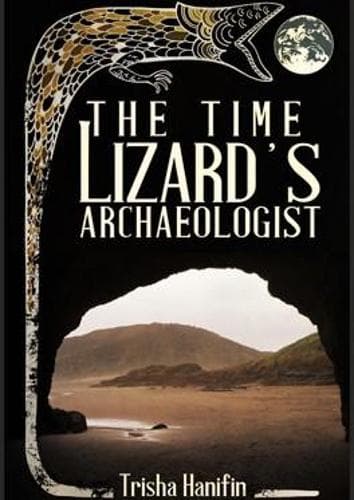Review: The Time Lizard’s Archaeologist
Reviewed by SR Manssen
Reviewed by: SR Manssen
An archaeologist sifts through the evidence they’ve unearthed to piece together the events of a past time. In The Time Lizard’s Archaeologist, the protagonist digs through his memories, dreams and visions of different times and realities to piece together the messages that Mother Earth is sending us.
Although psychoanalyst and dream therapist Jason Winston is used to analysing other people’s dreams, he’s caught off-guard when, in 2016, after his sister’s sudden death, he’s plunged into visions of alternate realities. He decides to be open to the visions and explore their meaning. He dreams of bees massing, getting ready to do something.
He’s alternately in a spaceship in the future observing a polluted earth, seemingly devoid of all life; he’s in Aretis, following the journey of the witch-woman Aja as she seeks justice for the desecration of her ancestor’s burial place and the destruction of her village; he’s with an ash-scattering monk in the 1400s. In these realities, the other beings are aware of their shadow-visitor, but Jason is unable to interact with them so is limited to observation.
In Aretis, Jason encounters men who delved deep to mine coal only to discover a strange new fuel source. But in their greed, they have unwittingly damaged more than they realise and almost destroyed the work of Grandfather Anisth and the Gardeners, whose unseen labours deep within the earth maintain energy forces that flow there. As Jason follows Aja ever southwards, a mysterious sickness sweeps up and devastates the human population.
Jason struggles to control these visions so at times fears that he will be trapped in his dreams forever, if he can’t find his way back to his own reality. Ten years on, Jason has learnt to live with the dreams – perhaps not controlling them but at least navigating them. However, ecological crisis has struck Auckland; bees have all but disappeared and many people have been lost to a plague, including Jason’s wife.
Another ten years on, in 2036, Jason is sought out by a young woman, Griffin, troubled by her own disturbing dreams and visions. It’s up to him to help her to understand her path in a time of growing unrest and hand over the mantle of being the time archaeologist.
Trisha Hanifan has masterfully woven together mythology and psychology to create a narrative containing a warning for humanity to curb our incessant greed for Earth’s resources but, while the writing itself is strong—with original ideas, solid character development, world building and points of view— there is a lot going on in the story. It left me wondering about a few elements and whether Hanifin brought about satisfactory resolution to some of the plot points.
The main character, for example, is a sought-out expert in interpreting dreams yet he didn’t seem to understand his own dreams and never did anything with the information he gleaned. Even when Griffin came to him (near the end of the story), it seems that she figured out what needed doing by herself without Jason’s help.
The story thread about Aretis was well developed and flowed well but the parallels with Jason’s world needed strengthening. In both worlds, there was a plague that wiped out ‘greedy humans,’ allowing Earth to regenerate. But Jason was just an observer, a bystander so what purpose did his revelation serve? I also struggled to understand what the 13th century monk story was all about and how it fitted in with the other stories.
The environmental message is subtly woven through the many threads of this narrative as is the theme of the influence of mother figures so it is a story that will appeal to those with strong imaginations - and with a better understanding of Freudian psychology than I.
Reviewed by SR Manssen
